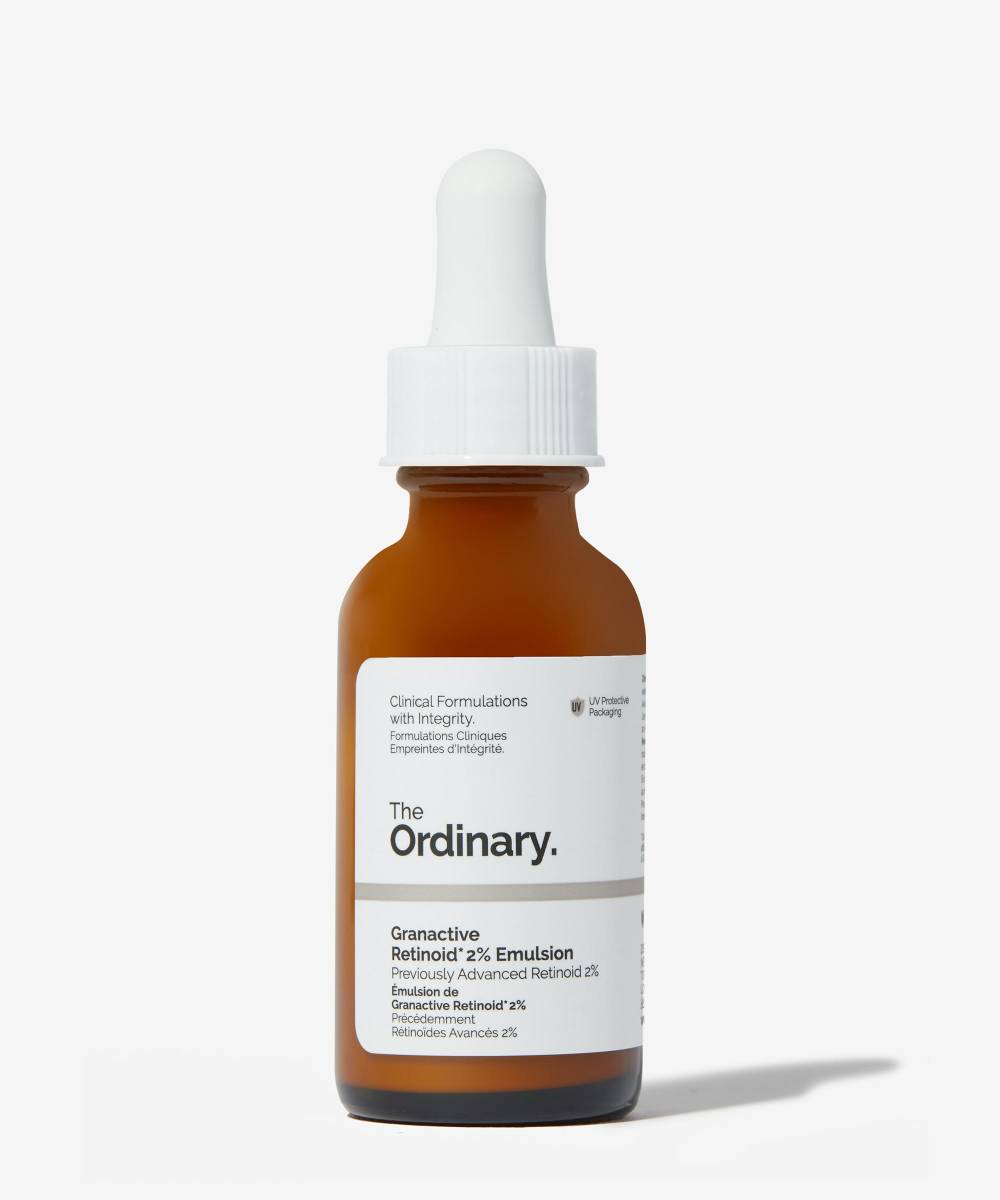If there was ever a time to use the term ‘skincare deja-vu’, it would be now. Not to be confused with the closely related retinol, today’s ingredient in question is retinal (more formally known as retinaldehyde.) Although retinol and retinal share a lot in common when it comes to results and effectiveness, there are a few key differences that can make one more suited to your skin and skincare routine than the other.
Putting a spotlight on The Ordinary Retinal 0.2% Emulsion, we’re getting you up to speed on all things retinal. From the benefits, to the products you should and shouldn’t be using alongside it, you’ll be well acquainted with this coveted skincare ingredient in no time.
What is retinal?
Kicking off with the basics – retinyl esters (the weakest form) retinol, and retinal (the strongest cosmetic form), are all part of the retinoid sisterhood. ‘Retinoid’ is simply a catch-all term for any skincare ingredient that derives from vitamin A, which has bundles of skincare benefits. This isn’t produced naturally by our skin but our skin can only process it in its bioactive form. Retinoids as a whole are often seen as the elite skincare ingredient when it comes to renewing, clearing, smoothing and brightening skin. And all of them have their age-supporting benefits.
Retinal is also a firm favourite of those with mature skin, as it improves the appearance of fine lines, wrinkles and crow’s feet.
What's the difference between retinal and retinol?
So, retinal vs retinol. The main difference between the two is that retinol is two conversion steps away from being classified as the bioactive form whilst retinal is only one step away. This essentially means retinal offers more efficient delivery of the bioactive form than retinol by skipping a step to convert to its bioactive form more efficiently.
What are the benefits of retinal?
Retinal knows no bounds when it comes to skincare benefits. It works by speeding up the renewal of fresh, new skin cells whilst also targeting skin concerns associated with the loss of collagen and elastin. With age, our collagen production slows down, which is what can leave skin looser, thinner and more prone to lines. Retinal helps to target the visible concerns associated with this, for plumper, brighter, firmer skin and more elasticity. So any fine lines and wrinkles are visibly reduced.
With the renewal of skin cells, it also helps to even skin tone and texture, reducing the appearance of dark spots and discolouration.
Should you be using retinal?
If you have mature skin and want to reduce the look of fine lines and wrinkles, then retinal could well be your new holy grail skincare ingredient. As it delivers more efficient delivery of the active form than retinol – you’ll see fast results.
Although retinal has endless skincare benefits, it should be used with caution and generally avoided by those with young skin. As it’s the most direct acting retinoid in skincare, it’s not recommended for younger skin or newer retinoid users.
How often should you use retinal?
When you have a fancy new skincare product, it can be tempting to reach for it with every AM and PM routine. But retinal should only be used as part of your evening skincare routine and always followed by SPF the next morning.
It’s advised to begin using retinal once per week for at least the first two weeks and then increase usage with time in line with your skin’s tolerance.
What's The Ordinary Retinal 0.2% Emulsion like?
The Ordinary are known for their affordable yet effective products, and their Retinal 0.2% Emulsion is no exception. As their highest-strength retinoid formula with a generous 0.2% concentration of retinal – which is what gives it that lemony yellow colour – expect to see the skin plumping and line-reducing results we’ve mentioned above.
Leaving no skincare fiend behind, it’s suitable for all skin types. It’s the ideal addition to skincare routines of those wanting to target the signs of ageing by reducing the appearance of crow’s feet, frown lines and forehead wrinkles. You’ll also see a noticeable improvement in skin firmness and texture, making your skin more luminous, smoother and even.
It also contains a synthetic oat analogue (avenanthramide), which is a key compound found in oats. The perfect addition to its retinal counterpart, it’s known to help with skin dryness and discomfort – two common concerns of retinoid use.
What ingredients should you use with retinal?
Moisturiser, hyaluronic acid, and squalane create a dreamy skincare regime when paired with retinal. But retinal doesn’t get on well with copper peptides, direct acids (such as glycolic and lactic acids), direct vitamin C or other retinoids – so only use these on a day you aren’t using retinal. This is because they’re all powerful ingredients, which can increase your skin’s sensitivity and irritate your skin.
Not ready for retinal? Try these from The Ordinary
If you aren’t sure what your perfect retinoid looks like yet, or you want to ease into your retinoid journey, there are products for you. The Ordinary Granactive Retinoid 2% Emulsion is a creamy serum featuring a retinol-alternative that’s less likely to irritate skin, making it perfect for those with sensitive skin. And The Ordinary Retinol 0.2% in Squalane is the perfect first step into retinol, as it’s effective yet moisturising and hydrating thanks to its squalane addition.







